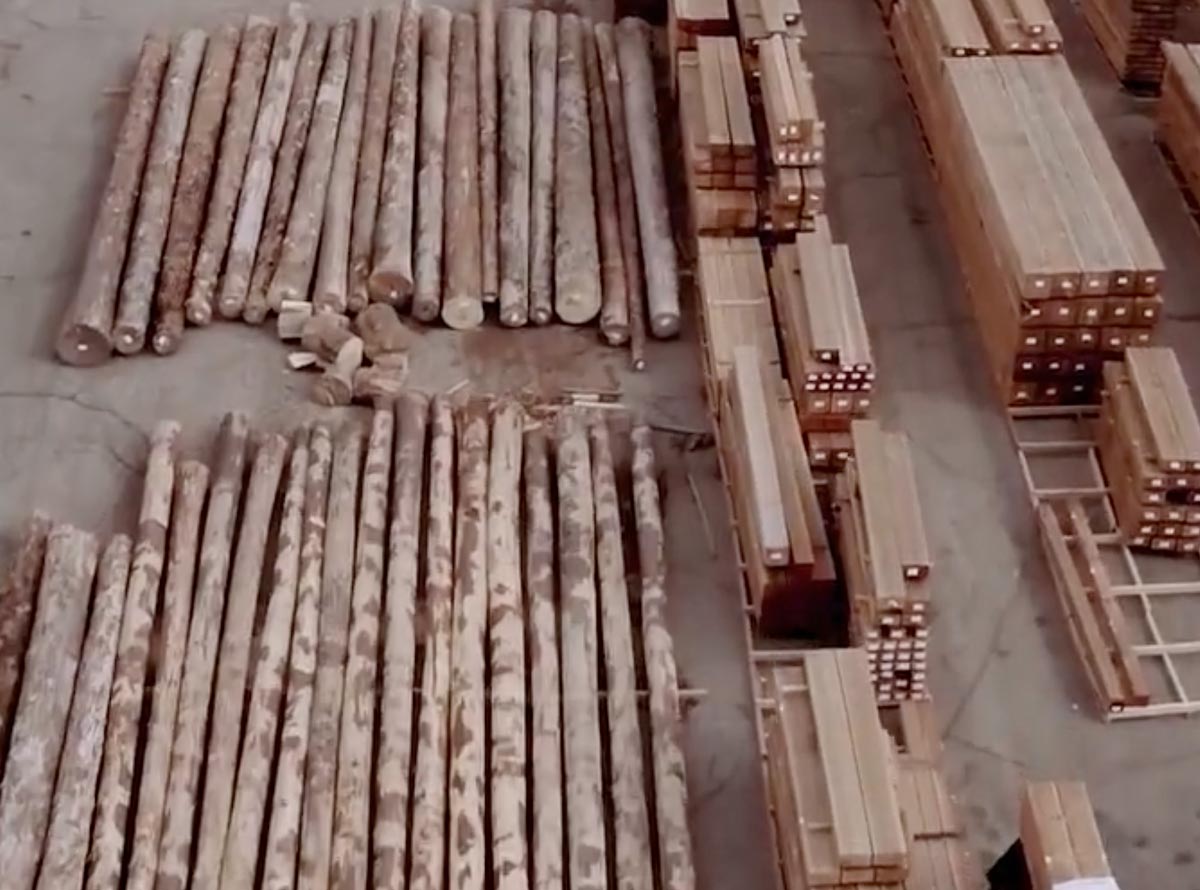Custom Timber Orders
RMJC’s large fabrication volume allows us to obtain the most competitive pricing and lead times on specialty timbers from multiple mills throughout North America. Available timber species include Douglas Fir, Oak, Cypress, Pine, Redwood, Cedar and Hemlock, to name a few. Available grades include Green, Air-Dried, Kiln Dried, RF Kiln Dried, and Reclaimed timbers.
Timber Species Guide
Douglas Fir:
Douglas fir is one of the world’s best timber producers and yields more timber than any other tree in North America. The wood is used for dimensional lumber, structural timbers, pilings, and plywood. The wood is also made into railroad ties, mine timbers, house logs, posts and poles, fencing, flooring, pulp, and furniture. Color: Can vary in color based upon age and location of tree. Usually a light brown color with a hint of red and/or yellow, with darker growth rings. In quartersawn pieces, the grain is typically straight and plain. In flatsawn pieces, (typically seen in rotary-sliced veneers), the wood can exhibit wild grain patterns. Grain: Generally straight, though wavy or curly grain is occasionally seen. Medium to coarse texture, with a decent natural luster. Characteristics: Typically machines well, but has a moderate blunting effect on cutters. Accepts stains, glues, and finishes well.
Western Red Cedar
Western Red Cedar is a commercially important lumber, used in a number of applications ranging from rough-sawn lumber for use in home construction to clear quartersawn material for classical guitar soundboards. It has a strong, aromatic scent when being worked. Appearance: Heartwood reddish to pinkish brown, often with random streaks and bands of darker red/brown areas. Grain: Straight grain and a medium to coarse texture. Characteristics: Used for shingles, exterior siding and lumber, boatbuilding, boxes, crates, and musical instruments.
Western Hemlock
Western Hemlock is native to the west coast of North America, with its northwestern limit on the Kenai Peninsula, Alaska, and its southeastern limit in Sonoma County, California. Color: Heartwood is light reddish brown. Sapwood may be slightly lighter in color but usually isn’t distinguished from the heartwood. The conspicuous growth rings can exhibit interesting grain patterns on flatsawn surfaces. Grain: generally straight, with a coarse, uneven texture. Characteristics: Used for structural timber, boxes, pallets, crates, plywood, framing, and other construction purposes.
Red & White Oak
Red and white oak are the most abundant hardwood species available in North America. Oak was a favorite of early English craftsmen and a prized material for American Colonists. White oak is just one of 86 oak species native to this country, but it is the classic oak of America. Red oak grows only in North America and is found further north than any other oak species. A big, slow growing tree, red oak takes 20 years to mature and lives an average of 300 years. Color: White Oak ranges from nearly white sapwood to a darker gray brown heartwood. Red Oak ranges from nearly white cream color to a warm, pale brown heartwood tinted with red. Grain: The grain is distinguished by rays, which reflect light and add to its attractiveness. Depending on the way the logs are sawn, many distinctive and sought after patterns emerge, such as flake figures, pin stripes, fine lines, leafy grains and watery figures. Characteristics: Heavy, very strong and very hard, stiff, durable under exposure, great wear-resistance, holds nails and screws well.
Southern Yellow Pine
Southern Yellow Pine is native to the eastern United States from southern New York to northern Florida, west to the extreme southeast of Kansas, and southwest to eastern Texas. Color: Heartwood is reddish brown, sapwood is yellowish white. Grain: Straight grained with a fine to medium texture. Characteristics: Commonly used for construction, such as stringers, roof trusses, poles, joists, piles, as well as interior applications.
Eastern White Pine
A very large tree with relatively few horizontal big limbs, the Eastern white pine is one of the tallest timber trees in the Northeast. Color: white to pale yellow with a reddish tinge. It darkens with age and air exposure, eventually turning to a deep orange color. Grain: The wood is light, soft, straight grained and with very uniform texture. Characteristics: It works very well and is easily shaped with hand and power tools. This wood accepts many types of glue well, making for tight bonding.


